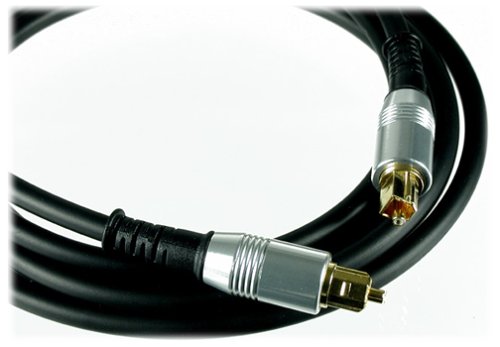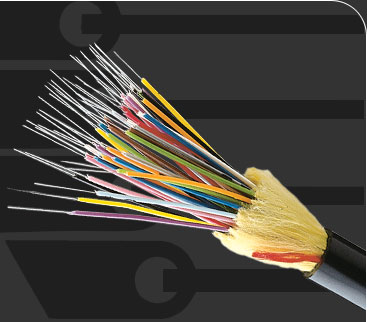Optical Cable
 Optical cable is also known as
Toslink. Unlike other cables that use electrical signals sent
through a conductive material, optical cables use light to transmit
information between home theater components. Dedicated to
sending digital audio information, the optical cable sits among the
higher-end connections of the home theater world.
Optical cable is also known as
Toslink. Unlike other cables that use electrical signals sent
through a conductive material, optical cables use light to transmit
information between home theater components. Dedicated to
sending digital audio information, the optical cable sits among the
higher-end connections of the home theater world.How Optical Cable Works
The inside of an optical cable is composed of many small fiber optic wires inside the outer insulation. The transmitting home theater component takes the digital signal it processes and converts it into pulses of light. The light is then sent through the optical cable and received on the other end. The receiving home theater component then converts the light pulses back into the digital signal.You are probably asking yourself, "How can the optical cable use light if you are not able to keep it in a straight line?" This is why it is composed of the fiber optic wires. Fiber optic wires use
 the same principles as coaxial
cable except on a much
smaller scale. Fiber optic wire is composed of an inner
transmitting channel of glass surrounded by an outer layer of glass
that has different physical properties. These properties
cause the light to reflect each time it reaches the surface between the
inner and outer layer. By causing the light to reflect, the
outer layer of glass is able to direct it around any bends in the
larger optical cable.
the same principles as coaxial
cable except on a much
smaller scale. Fiber optic wire is composed of an inner
transmitting channel of glass surrounded by an outer layer of glass
that has different physical properties. These properties
cause the light to reflect each time it reaches the surface between the
inner and outer layer. By causing the light to reflect, the
outer layer of glass is able to direct it around any bends in the
larger optical cable.Since the optical cable uses light to transmit information between home theater components, it is not noticeably effected by electromagnetic or radio frequency interference. This is a great advantage because all electrical devices create electromagnetic fields; this includes your home's internal wiring. When these electromagnetic fields disrupt the signals sent through your cables, the result is audio and video quality that is less than stellar. This is not a concern with optical cable.